How insourcing can help you grow your handmade business
Editor’s Note: We’re excited to welcome our friend Rebecca Saylor who runs OodleBaDoodle where she creates an eco-friendly line of whimsical, home decor pillows and accessories made by hand, one-at-a-time from reclaimed high-end textiles + she’s also the SFEtsy Street Team Co-captain. Rebecca and I were chatting on our podcast about how she upscaled her business and increased her production and sales. She mentioned how Siser (the leading manufacturer of heat transfer vinyl) was an integral part of her process of streamlining her business. Since Siser is one of our Craftcation 2017 sponsors I asked if she would share her experience with their products and introduce Siser to all of you.
P.S. – If you’re joining us at Craftcation 2017 you’ll have the opportunity to create your own vinyl heat transfers with Siser in their workshops or in their marketplace booth.
-Nicole S.
My name is Rebecca Saylor and I run a small pillow making business in San Francisco. I left my corporate job almost five years ago and it has been one of the most rewarding experiences of my life so far!
Like many of us with a creative passion, I wasn’t always fortunate enough to be able to pursue my creative business full time. For the first part of my adult career, I worked in the corporate world as a tech recruiter, in a cubicle, surrounded by coworkers who had goals of becoming the next VP or getting their MBA.
Even though I was good at my job, I got paid well and I had interesting coworkers something just kept tickling at the back of my brain and I couldn’t shake the feeling that I was meant for more than corporate life. I didn’t really have the desire to be the next VP or get an MBA, that was definitely not appealing to me.
That tickle became an itch and an itch became a whisper until the whisper started yelling at me and I could no longer ignore the desire to become a creative entrepreneur! After the startup I was working for moved the entire company from Miami, Florida to San Francisco, they closed their doors and I saw my chance to pursue my creative endeavor, OodleBaDoodle.
Like many of you out there, in the beginning, doing all the stuff for my business was so exciting and rewarding. It felt so good to create something and see my customers’ reactions and get paid! It was about as perfect as I could have imagined. I had an idea, I turned it into a product and then people actually bought it. That tickle in the back of my brain began to feel more satisfied!
Like all thriving businesses, pretty soon, I began encountering some issues. I had passed the first hurdle of selling my product. I had created something people wanted to buy. I immersed myself in education about Etsy sellers and other people selling their crafts and it seemed to me, the natural progression was to learn more about selling my work in small boutiques as well as online and at craft shows. So I began by networking with some of the small business owners in San Francisco. Talking to other small business owners was easy for me, my years of experience as a corporate recruiter gave me the skills to be an effective communicator and networker.
So, pretty soon, I saw my pillows popping up in stores all over California and even had some accounts in other states.
As you might imagine, I enjoyed filling these orders. Instead of selling one pillow at a time, my wholesale customers were ordering 10-15 pillows at once. About one year into this new part of my business, I suddenly found myself sitting in front of my sewing machine for eight hours or more every single day!
I think they call that being a “victim of your own success.” Even though, I enjoyed these long sewing days and happy customers (and the money!) I knew this level of production wasn’t going to be sustainable for one person for the long run.
I was at a crossroad with OodleBaDoodle. As a micro business owner whose business was growing quickly, I had some choices.
- Hire help
- Outsource some or all of my production
- Invest in equipment
If I am being totally honest, I selfishly wanted to find a way to maintain as much control as I could. But the most obvious choice for me was to hire sewing help. In the beginning of figuring out how to grow, I hired and trained some amazing sewers. After awhile, the process of training someone to create my art felt emotionally draining. Once my helpers got really good, they understandably, moved on to their own projects and the cycle of searching for someone, training them, etc began again.
I did explore the idea of outsourcing some or all of my production. I began by figuring out which part of my production would be the best part to outsource. I was still in a “micro-production” phase so I found it challenging to find the right outsourcing partner to pursue a real outsourcing strategy. The sewing production houses I encountered had never seen a complex product like mine and that led to higher costs for me. I made a commitment that I wanted my pillows to be affordable so adding in these extra costs was going to push my pillows into a price category that didn’t make sense for my customer base.
After a very busy holiday season and a whole year of exploring options to more efficiently produce my work, I decided to take a step back and explore my process to see if I could find a technology solution. Investing in a piece of equipment seemed like a great idea, but what kind of equipment? How much could I afford? What was going to be the return on my investment once I got things set up?
Initially, through a tech shop membership, I would batch cut some of my fabrics on a laser cutter. This was so great and I was able to make enough pieces to last through a good season of production. Over time, Tech Shop felt like it became a hurdle to my production, not a help. The lasers were always full, I had to stop my work flow to call them on the phone to see if there was an appointment available and then I could only go for two hours at a time. I found it cumbersome to interrupt my work day to go to tech shop and spend only a couple of hours cutting. What if I had a wonderful idea in the middle of the night? Sometimes it would take me a week to get to a laser and by then, most of my excitement about the new idea was gone.
Buying a laser cutter wasn’t in my budget and I didn’t have anywhere to put it in my tiny SF apartment. The search continued for other equipment options. I began researching vinyl cutters. You are probably familiar with the small, home versions of these machines Silhouette, Cameo, Cricket, etc. I needed something more powerful than these machines to cut fabric and other materials. After some online research, I stumbled upon USCutter and it’s desktop cutting machine, the Titan. This was more than a vinyl cutter, it was going to work for me because it was made entirely of metal parts and could cut a wide variety of materials for my projects.
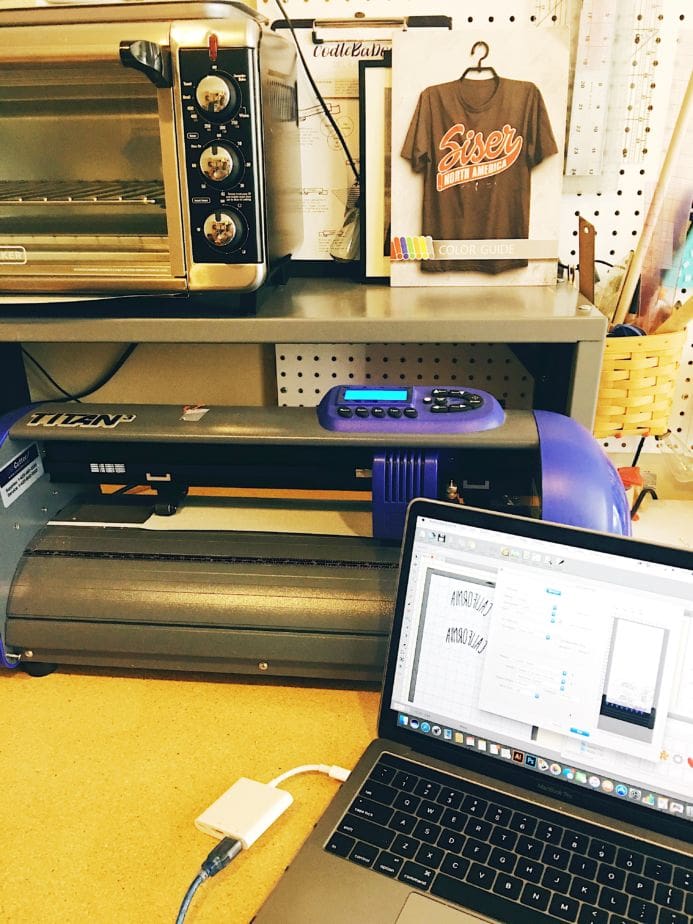
Once I made my decision and my purchase, USCUtter sent me a vinyl starter pack with a variety of vinyl products including some heat transfer vinyl from Siser called ‘EasyWeed‘. At first, I wasn’t interested in vinyl as it didn’t fit into my tight constraints of using only reclaimed materials and I just sat the samples in a corner of my sewing room. As the days went by in my studio that small pack of vinyl was staring at me from the corner, taunting me to get creative. I had spent weeks figuring out my cutter and I was soon on a cutting frenzy, making so many new designs and thinking up ways to increase the quality of my work. Finally, I couldn’t resist the urge to cut into some of that vinyl. It was by chance that the first project I cut in vinyl was using the Siser EasyWeed vinyl because it was the only one in that sampler pack that was gold and I wanted to add a gold accent to one of my pillow designs.
My first thought was “It was seriously the easiest vinyl to weed!” Are you wondering what is weeding and why you’d want it to be easy? Before I came across this product, I had that same question! Weeding is the process of removing the negative space from the design you cut, so the more detailed your design, the more complex the weeding process can be. My designs tend to be full of details, so I wasn’t quite sure what to expect. Much to my surprise, I was extremely impressed with the clean cuts and the ease of how the vinyl separates from itself for application.
The next day I ordered the Siser vinyl guide so I could see all my vinyl options! They sent me a folder full of all the different heat transfer vinyl products they offer. It has been an incredibly fun and creative process to think about how I can incorporate all of these vinyl accents into my products.
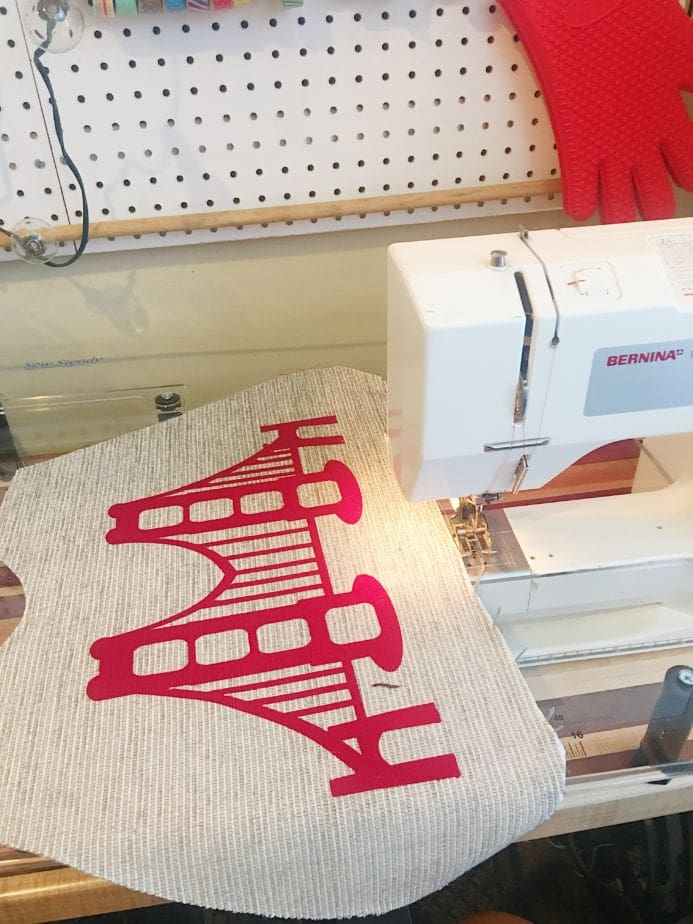
When I look back on my journey to growth and production, I think it’s important that makers and small businesses explore the options that exist for them. Looking into the three ways for my business to grow (hiring sewing help, outsourcing part of the production and investing in equipment) pushed me in a direction I wouldn’t have explored otherwise. The results have been amazing. I feel like now I can creatively offer a higher quality product to my customers and know that the vinyl I’m using has a lot of options for colors and textures so I can maintain the one-of- a-kind feeling of my work.
Adding this vinyl cutter has helped me grow my production in ways I really couldn’t have imagined. It was definitely a leap of faith to invest in an expensive piece of equipment not knowing if it would work for my customers as well as use a new technique. With the help of my new vinyl cutter and Siser’s array of vinyls I have been able to scale up without hiring outside help or contracting out parts of my business and it makes me feel really good to still be a solo-preneur.

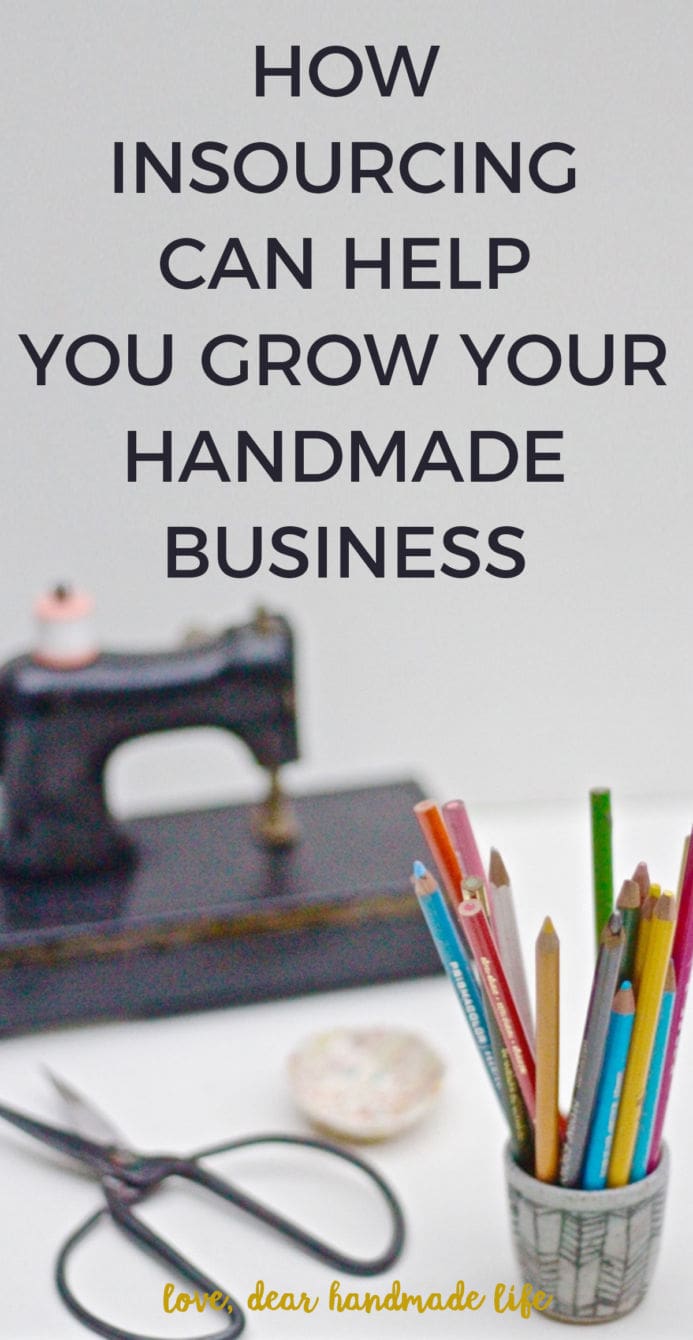

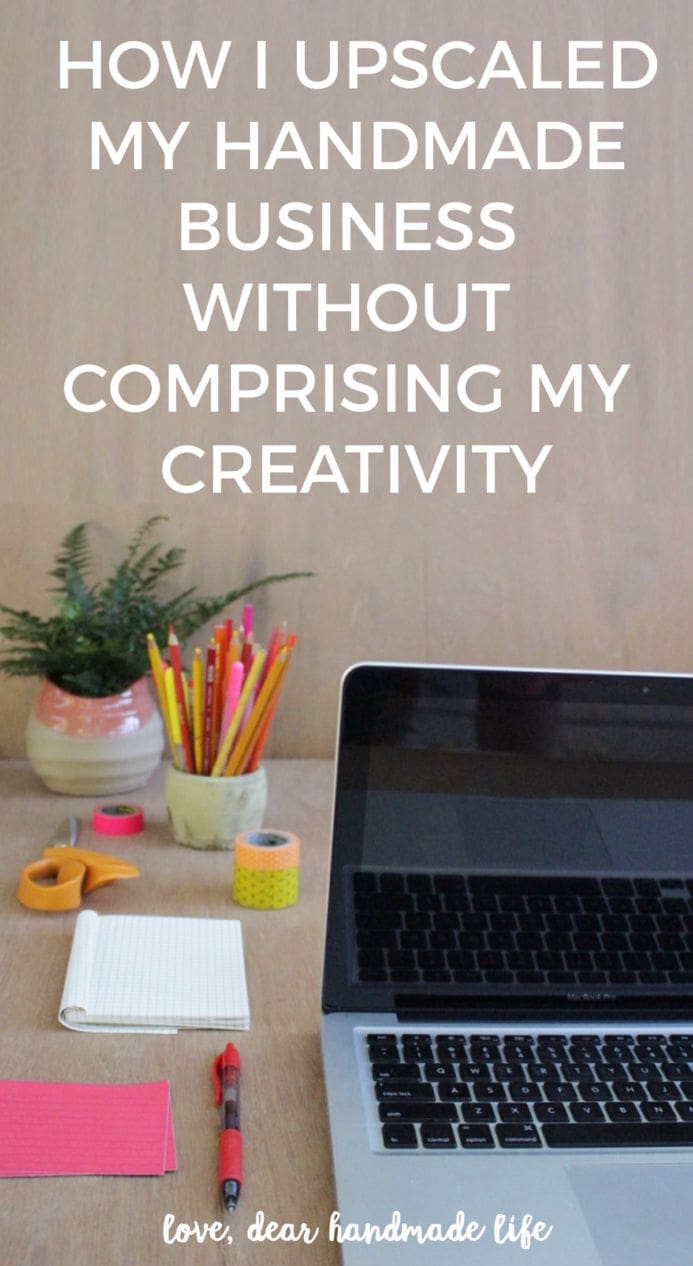
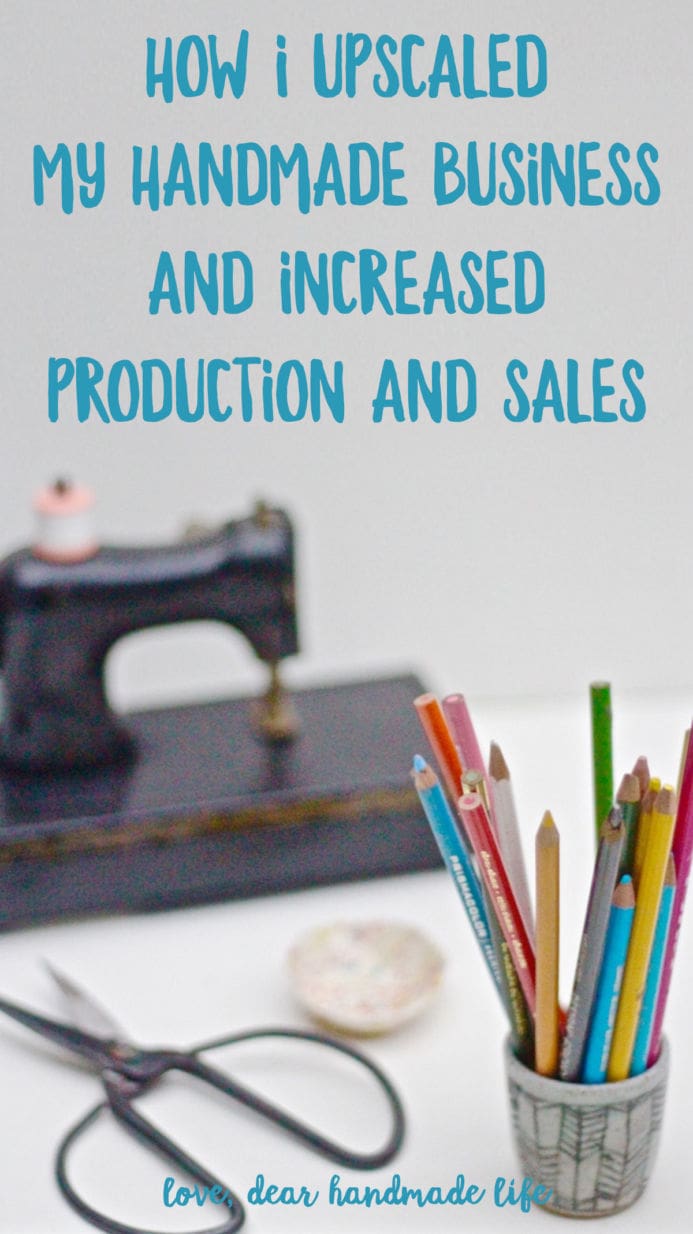


Hey, great job!
I’m actually just into this business but I’m currently in school. I’m conflicted between waiting till I am done with school which is 2020 or start off right now. What do you think?
And I’d love to ask you a few questions 🙏